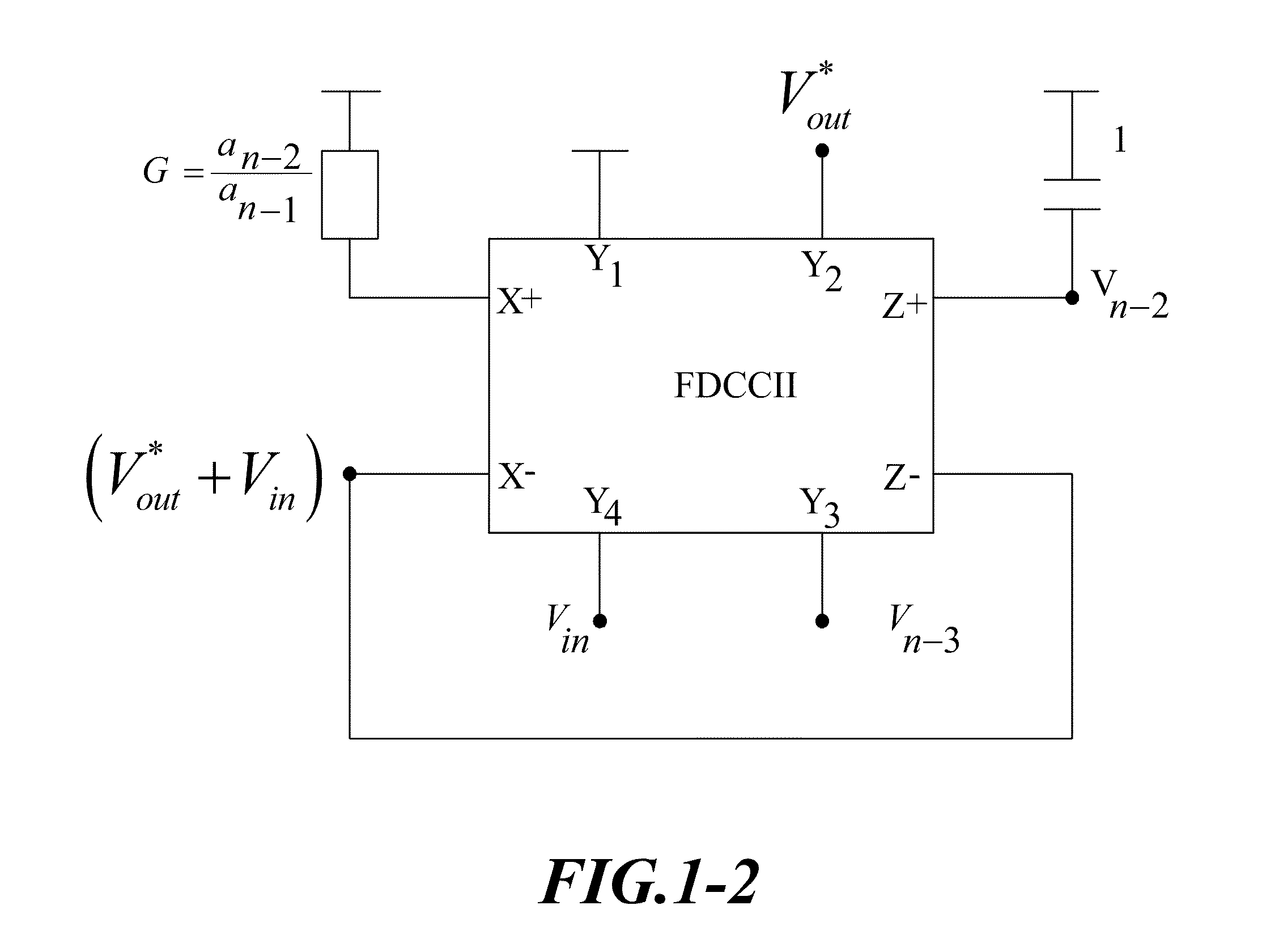DDCC and FDCCII-Grounded Resistor and Capacitor Filter Structures
- Summary
- Abstract
- Description
- Claims
- Application Information
AI Technical Summary
Benefits of technology
Problems solved by technology
Method used
Image
Examples
Embodiment Construction
[0141]In an embodiment of the present invention, the voltage-mode Differential Difference Current Conveyor (DDCC) and Fully Differential Current Conveyor (FDCCII)-Resistor and Capacitor filter structures are designed with the following listed criterias: filters have the minimum number of active (DDCC and FDCCII) and passive (Resistor and Capacitor) components for a given order to reduce total parasitics, power consumption, chip area, and noise; filters use grounded capacitors and grounded resistors both of which have much lower parasitics than floating capacitors and floating resistors and can straight absorb shunt capacitive and conductive parasitics.
[0142]Note that the DDCC and FDCCII-grounded R and C filter with the aforementioned criteria has the minimum non-ideal parasitic capacitance and conductance and the minimum noise, both of which lead to the most precise output signals, and the minimum power consumption and the minimum chip area, both of which lead to the lowest energy p...
PUM
 Login to View More
Login to View More Abstract
Description
Claims
Application Information
 Login to View More
Login to View More - R&D
- Intellectual Property
- Life Sciences
- Materials
- Tech Scout
- Unparalleled Data Quality
- Higher Quality Content
- 60% Fewer Hallucinations
Browse by: Latest US Patents, China's latest patents, Technical Efficacy Thesaurus, Application Domain, Technology Topic, Popular Technical Reports.
© 2025 PatSnap. All rights reserved.Legal|Privacy policy|Modern Slavery Act Transparency Statement|Sitemap|About US| Contact US: help@patsnap.com



